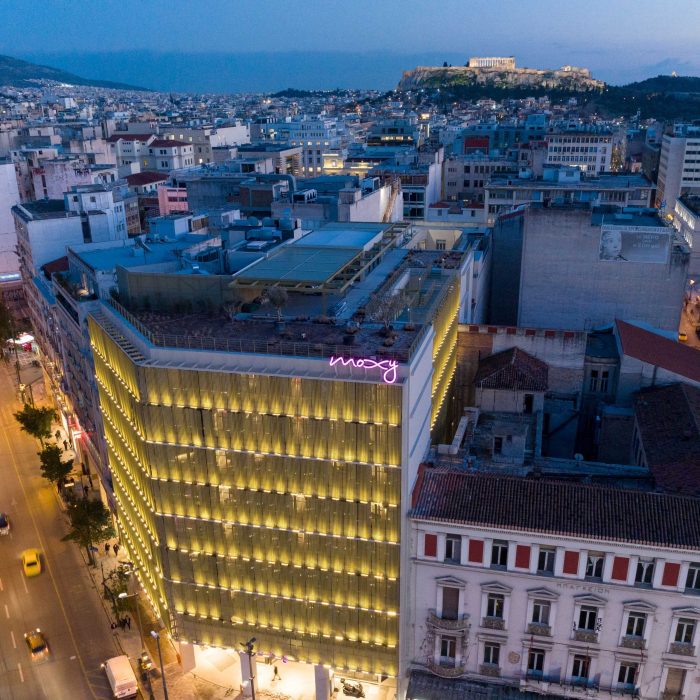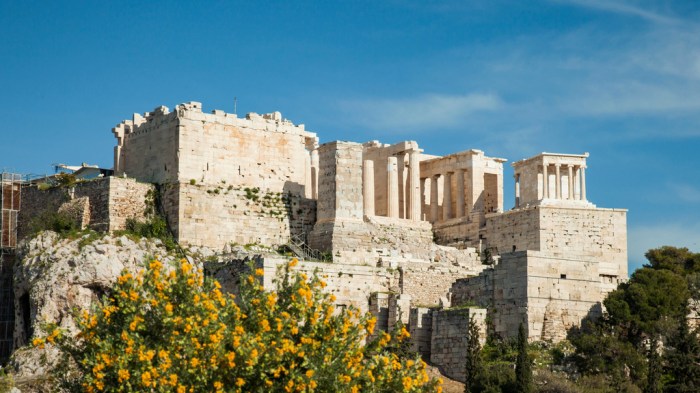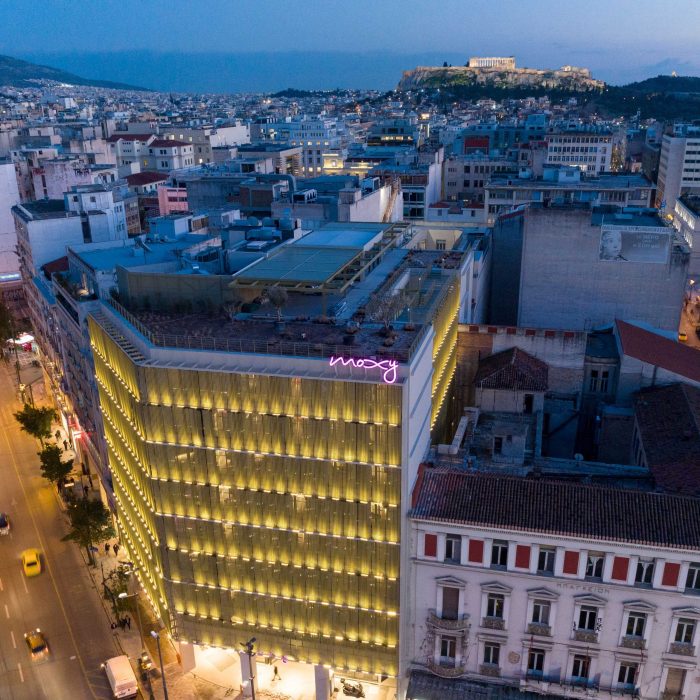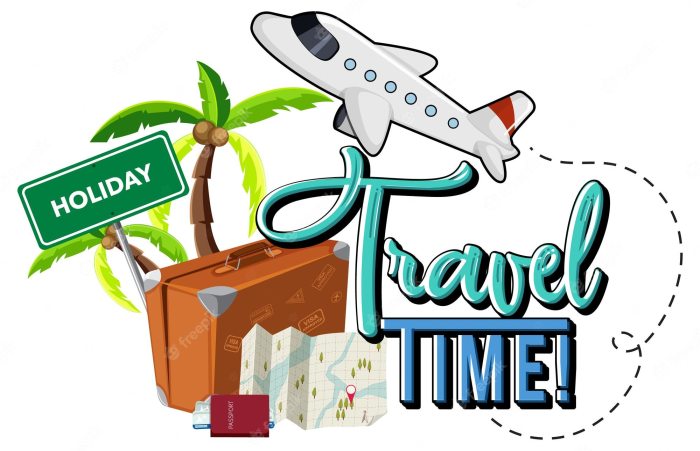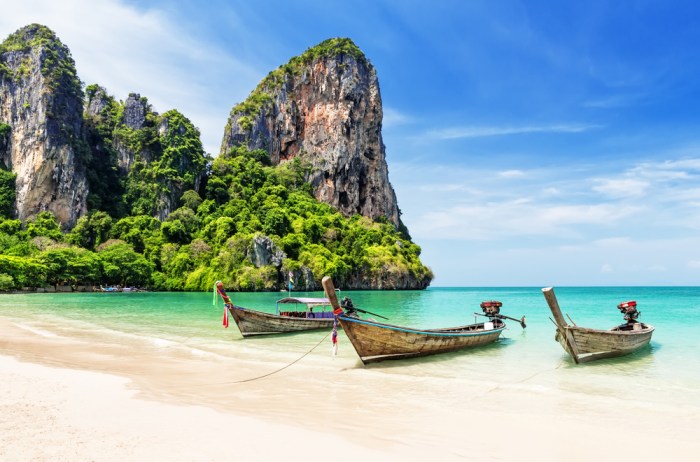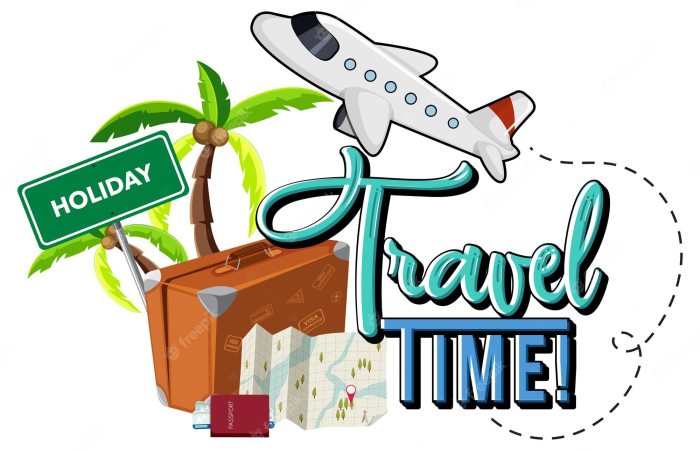Top things to do in Dominican Republic: Discover the vibrant beauty of the Dominican Republic, from its stunning beaches to its rich culture and history. This guide explores the best experiences, from relaxing on pristine shores to exploring ancient landmarks. Prepare to be captivated by the island’s diverse offerings and unforgettable adventures.
This comprehensive guide to the Dominican Republic will detail the country’s top attractions, including its renowned beaches, thrilling outdoor activities, historical landmarks, and vibrant culinary scene. We’ll delve into the nuances of each region, providing a deeper understanding of what makes this Caribbean paradise so special. Whether you’re seeking a relaxing beach vacation, an adventurous outdoor experience, or a cultural immersion, this guide has you covered.
Introduction to the Dominican Republic
The Dominican Republic, a vibrant island nation in the Caribbean, offers a captivating blend of natural beauty, rich history, and warm hospitality. From pristine beaches to towering mountains, the country boasts a diverse landscape that caters to a wide range of interests. Its colonial-era architecture, coupled with a vibrant culture, makes it a unique destination for travelers seeking an authentic Caribbean experience.The Dominican Republic’s history, intertwined with indigenous Taino cultures and subsequent European colonization, has left a lasting mark on the nation’s identity.
This heritage is reflected in its architecture, traditions, and artistic expressions, adding a captivating layer to its tourist appeal. Understanding this history provides a deeper appreciation for the country’s cultural significance and the experiences available to visitors.
Geographical and Climatic Influences
The Dominican Republic’s geography significantly impacts its tourism offerings. The country’s diverse terrain, encompassing lush rainforests, towering mountains, and expansive coastlines, creates varied experiences for travelers. Its tropical climate, characterized by warm temperatures and abundant rainfall, particularly in the mountainous regions, makes it ideal for outdoor activities. This warm climate is crucial to the thriving tourism industry, as it allows for year-round activities and experiences.
The varied microclimates within the country allow for diverse vegetation, further enriching the landscape’s appeal.
Regional Attractions
The Dominican Republic is divided into several distinct regions, each with its own unique attractions. Understanding these regional differences allows travelers to tailor their experiences to their specific interests.
- The North Coast: Known for its stunning beaches, like Cabarete, perfect for windsurfing and kitesurfing, and Sosúa, ideal for family vacations. The lush vegetation and proximity to the Atlantic Ocean create a captivating coastal scene. The vibrant nightlife and diverse culinary options also contribute to the allure of the North Coast.
- The South Coast: Featuring luxurious resorts and pristine beaches like Punta Cana and Bavaro, this region is a haven for those seeking relaxation and all-inclusive experiences. The abundance of hotels and the vast stretches of white-sand beaches attract tourists seeking a resort-style getaway.
- The Central Region: This area encompasses the majestic Cordillera Central mountain range. The towering peaks, lush valleys, and historic towns like Jarabacoa offer opportunities for hiking, adventure tourism, and exploring local culture. The unique flora and fauna of the region make it a popular destination for nature enthusiasts.
- The Eastern Region: Featuring the Samaná Peninsula, this area is known for its stunning beaches, like Playa Rincón, and the iconic Samaná Bay, famous for whale watching during specific seasons. The picturesque scenery and rich biodiversity make this a popular destination for nature lovers.
Historical and Cultural Significance
The Dominican Republic’s history is a blend of indigenous Taino cultures, Spanish colonization, and subsequent independence movements. This rich past is reflected in the architecture, customs, and traditions of the country. The colonial architecture, especially in Santo Domingo, showcases the influence of European settlers, offering a glimpse into the past.
- Santo Domingo: The oldest continuously inhabited European settlement in the Americas, Santo Domingo boasts remarkable colonial architecture. The Zona Colonial, a UNESCO World Heritage Site, provides an authentic glimpse into the country’s rich history.
- Taino Heritage: While the Taino population was significantly impacted by colonization, remnants of their culture and traditions persist in certain areas and local communities. Learning about their history provides a deeper understanding of the country’s multifaceted heritage.
Beaches and Coastal Activities
The Dominican Republic boasts a stunning coastline, offering a diverse range of beaches from secluded coves to vibrant resort areas. These stretches of white sand and turquoise waters provide idyllic settings for relaxation and exhilarating water activities. The country’s geographical variety translates into a plethora of experiences, catering to every taste, from sun-worshippers to adventurous souls.The Caribbean climate, coupled with the country’s unique topography, creates a paradise for beach lovers.
The warm waters, soft sands, and lush surroundings make the Dominican Republic a top choice for beach vacations.
Top Beaches in the Dominican Republic
The Dominican Republic offers a wide selection of beaches, each with its own distinct character. From the famous all-inclusive resorts to hidden gems, there’s a beach for every traveler. These beaches are a testament to the country’s natural beauty.
- Bavaro Beach (Punta Cana): Renowned for its powdery white sand and calm, clear waters, Bavaro Beach is a popular destination for families. Its extensive stretches of sand, combined with the numerous all-inclusive resorts, make it a haven for relaxation and vacation enjoyment.
- Playa Rincon (La Romana): This beach boasts a beautiful, secluded atmosphere, perfect for couples seeking tranquility. The crystal-clear waters and soft white sand are ideal for swimming and sunbathing, while the laid-back atmosphere provides a sense of peace and calm.
- Cabarete Beach (Puerto Plata): Famous for its windsurfing and kitesurfing, Cabarete Beach is a haven for water sports enthusiasts. The consistent trade winds create ideal conditions for these activities. The lively atmosphere and vibrant local culture further enhance the experience.
- Playa Uvero Alto (Bávaro): Known for its pristine white sand and calm turquoise waters, Playa Uvero Alto offers a perfect balance between relaxation and water activities. The clear visibility of the seafloor makes it a wonderful spot for snorkeling and exploring marine life.
Popular Water Sports and Activities
The Dominican Republic’s coasts provide a multitude of water sports and activities. These opportunities cater to varying interests and skill levels, ensuring an unforgettable experience for every visitor.
- Swimming and Sunbathing: The warm, clear waters and soft sands invite visitors to bask in the sun and enjoy the refreshing ocean. The shallow areas are particularly suited for families with young children.
- Snorkeling and Scuba Diving: The vibrant coral reefs and diverse marine life make snorkeling and scuba diving a must-do activity. The visibility in many areas is exceptional, allowing for stunning underwater explorations.
- Windsurfing and Kitesurfing: Cabarete is renowned for its consistent winds, making it an ideal location for windsurfing and kitesurfing enthusiasts. Experienced and novice windsurfers alike can enjoy the thrill of the waves.
- Boat Tours and Fishing: Boat tours offer opportunities to explore the coastline, discover hidden coves, and witness the beauty of the surrounding landscape. Fishing excursions are also popular, with a variety of species available for anglers of all skill levels.
Beach Destination Comparison
Different beach destinations offer varying atmospheres and amenities. Understanding these differences allows travelers to select a location that aligns with their preferences.
| Beach | Water Clarity | Sand Type | Proximity to Amenities |
|---|---|---|---|
| Bavaro Beach | Excellent | Powdery White | High |
| Playa Rincon | Excellent | Fine White | Moderate |
| Cabarete Beach | Good | Fine White | Moderate |
| Playa Uvero Alto | Excellent | Fine White | High |
Nature and Outdoor Adventures
The Dominican Republic boasts a breathtaking array of natural landscapes, from towering mountains to lush rainforests and pristine beaches. Beyond the iconic coastal scenes, the interior holds a wealth of opportunities for outdoor exploration and wildlife encounters. Hiking trails wind through diverse ecosystems, offering glimpses into the country’s rich biodiversity. Immerse yourself in the beauty of nature’s wonders and discover the heart of the Dominican Republic.Exploring the Dominican Republic’s natural beauty goes beyond simply admiring the scenery; it’s about engaging with the environment and appreciating the delicate balance of its ecosystems.
The country’s national parks and protected areas provide crucial habitats for a diverse range of flora and fauna, and offer opportunities for eco-tourism, which plays a vital role in supporting local communities.
National Parks and Protected Areas
The Dominican Republic’s national parks and protected areas are vital for preserving its unique biodiversity. These areas safeguard a wide variety of ecosystems, from tropical rainforests to mountainous regions. They are home to an incredible array of flora and fauna, many of which are found nowhere else on Earth.
Wildlife Diversity
The Dominican Republic’s diverse ecosystems support a rich tapestry of wildlife. From the vibrant plumage of exotic birds to the elusive movements of mammals, the country offers a unique opportunity to witness nature’s artistry. Endemic species, those found only in the Dominican Republic, highlight the country’s exceptional biological importance.
Popular Hiking Trails and Outdoor Activities
The Dominican Republic offers a multitude of hiking trails, catering to different levels of experience. From easy walks through lush landscapes to challenging ascents through mountainous terrain, there’s a trail for everyone. Other popular outdoor activities include horseback riding through the countryside, kayaking or canoeing on pristine rivers, and birdwatching excursions.
Comparison of National Parks
| National Park | Wildlife Viewing Opportunities | Difficulty Level |
|---|---|---|
| Jarabacoa National Park | Excellent opportunities to spot various bird species, including the endangered Dominican woodpecker. Good chances to see monkeys and other mammals. | Moderate to challenging, with some trails requiring a good level of fitness. |
| Los Haitises National Park | Remarkable birdwatching opportunities, and a chance to observe diverse marine life from the mangrove ecosystem. | Easy to moderate, with well-maintained trails, mostly suitable for leisurely exploration. |
| José del Carmen Ramirez National Park | Good chances of spotting reptiles and amphibians, as well as a wide variety of bird species. Opportunities to see different mammal species. | Moderate, with some trails offering a moderate level of challenge. |
Eco-Tourism and Community Support
Eco-tourism plays a crucial role in the Dominican Republic, not only by supporting local communities but also by promoting conservation efforts. Many eco-lodges and tour operators employ local guides and staff, generating revenue for local communities and fostering a deeper understanding of the environment. This approach to tourism directly benefits the local population, encouraging responsible travel practices and sustainable tourism.
“Eco-tourism, when implemented responsibly, fosters a symbiotic relationship between nature conservation and community development.”
Culture and History

The Dominican Republic boasts a vibrant tapestry woven from indigenous Taino heritage, Spanish colonial influence, and the resilience of its people. This rich cultural heritage is evident in its music, art, architecture, and cuisine, creating a unique identity that draws visitors from around the globe. From the grandeur of colonial cities to the lively rhythms of its music, the Dominican Republic’s history is palpable in every corner.This cultural richness is not just a collection of historical facts; it’s a living entity, constantly evolving while retaining its roots.
The country’s historical sites serve as living museums, showcasing the evolution of its culture and society. The enduring influence of its past is reflected in the traditions and customs that continue to shape the lives of Dominicans today.
Historical Landmarks and Sites
The Dominican Republic offers a fascinating journey through time, from its pre-Columbian past to its vibrant present. Numerous historical landmarks and sites stand as testaments to the nation’s rich history. These sites provide valuable insights into the country’s evolution, offering a tangible connection to the past.
- Alcázar de Colón: This former residence of Diego Colón, son of Christopher Columbus, is a prime example of 16th-century Spanish colonial architecture. The Alcázar showcases the grandeur of the era, offering a glimpse into the lives of the early colonial settlers and their interactions with the indigenous population. The structure itself is a masterpiece of craftsmanship and exemplifies the artistic skill of the time.
- Parque Nacional Los Haitises: This national park, located on the northern coast, holds remarkable geological and historical significance. It was a refuge for indigenous people before colonization and now showcases a unique ecosystem. Its historical importance is tied to the island’s pre-Columbian past and the natural beauty that sheltered the indigenous population.
- Museo de las Casas Reales: This museum, located in Santo Domingo, provides a detailed look at the colonial period. Exhibits cover various aspects of the period, from trade and administration to social and cultural practices. It is an essential stop for understanding the foundations of the Dominican Republic’s colonial history.
Museums by Region
The Dominican Republic’s museums are scattered across the country, each offering a unique perspective on the region’s history and culture. They are valuable resources for understanding the country’s multifaceted heritage.
| Region | Museum | Description |
|---|---|---|
| Santo Domingo | Museo del Hombre Dominicano | This museum delves into the country’s pre-Columbian and colonial past, showcasing the Taino culture and the Spanish colonization. It is a crucial stop for anyone interested in understanding the island’s history before the arrival of Europeans. |
| Puerto Plata | Museo de las Casas Reales | The museum explores the region’s historical importance, with artifacts and exhibits illustrating the cultural exchange and development during the colonial era. |
| La Romana | Museo de Arte Moderno | This museum showcases a diverse collection of modern and contemporary art from the Dominican Republic and beyond. It provides a valuable perspective on the nation’s artistic evolution. |
Music, Art, and Cuisine
The Dominican Republic’s cultural identity is deeply intertwined with its music, art, and cuisine. These elements reflect the diverse influences that have shaped the nation’s history and character.
- Merengue: This vibrant and infectious music genre is a cornerstone of Dominican culture. Its lively rhythms and infectious beats have become synonymous with the country’s spirit and are often enjoyed during festivities and celebrations.
- Contemporary Art: The Dominican Republic boasts a thriving contemporary art scene. Artists are pushing boundaries and exploring new mediums, creating works that reflect the country’s evolving identity.
- Cuisine: Dominican cuisine is a delightful fusion of indigenous Taino flavors, Spanish colonial influences, and African culinary traditions. It is a true testament to the country’s diverse heritage.
Significance of Historical Events for Tourism
Specific historical events have had a profound impact on the Dominican Republic’s tourism sector. These events have contributed to the country’s unique appeal and continue to shape its identity.
“The preservation of historical sites and landmarks has been instrumental in the development of the tourism sector, drawing visitors who are interested in immersing themselves in the nation’s rich past.”
Food and Drink Experiences: Top Things To Do In Dominican Republic
The Dominican Republic boasts a vibrant culinary scene, a delicious reflection of its diverse cultural heritage. From the bustling city streets to the tranquil beachside restaurants, the aroma of spices and the taste of fresh ingredients create an unforgettable sensory experience. This tapestry of flavors is woven from indigenous Taino traditions, Spanish colonial influences, and later African and Asian additions, resulting in a unique and exciting culinary adventure.The local cuisine is deeply intertwined with the nation’s history and traditions.
Ingredients are sourced locally whenever possible, highlighting the country’s agricultural bounty. Traditional recipes are often passed down through generations, maintaining the authenticity and cultural significance of each dish. This dedication to heritage is evident in the meticulous preparation and the shared joy of communal meals.
Popular Restaurants and Food Stalls
The Dominican Republic offers a wide array of dining options, from casual food stalls to upscale restaurants. The following list showcases some popular spots, categorized by region, offering a glimpse into the diverse culinary landscape.
Beyond the beaches and resorts, the Dominican Republic boasts charming small towns perfect for a slower pace. Exploring these hidden gems is a fantastic way to truly immerse yourself in the local culture, and you can find some great trip ideas for that in trip ideas best small towns in. So, while you’re there, don’t forget to mix your relaxation with cultural immersion; that’s part of what makes the Dominican Republic such a fantastic destination.
- Santo Domingo: Known for its historical charm and vibrant culinary scene, Santo Domingo features a mix of international and local restaurants. Notable spots include “El Batey,” a traditional restaurant showcasing Dominican specialties, and “La Taverna,” serving authentic Spanish-influenced dishes. Street food vendors are also abundant, offering a taste of Dominican “comida rápida,” like tostones, empanadas, and pastelitos.
Exploring the Dominican Republic is amazing, with stunning beaches and vibrant culture. However, if you’re looking for a different kind of adventure, consider some incredible road trips in Pakistan. For example, check out the best road trips in pakistan for a truly unique experience. No matter what, the Dominican Republic still has incredible things to see, like hiking in the mountains or swimming in the crystal clear waters!
- Punta Cana: This popular tourist destination features a range of restaurants, catering to diverse palates. “La Palapa” is a popular beachfront restaurant offering fresh seafood and Caribbean cuisine. For a more authentic experience, consider local food stalls selling grilled meats and tropical fruits.
- Puerto Plata: In the north, Puerto Plata offers a mix of traditional and modern restaurants. “El Rinconcito Dominicano” offers a wide array of Dominican dishes, while “Casa de Campo” boasts a luxurious ambiance and international cuisine.
Unique Dominican Dishes
Dominican cuisine features a variety of unique dishes, showcasing the country’s diverse culinary heritage. Here are a few examples:
- La Bandera Dominicana: This national dish consists of rice, beans, and meat (typically beef or chicken). The balanced combination of these staples reflects the country’s history and cultural influences.
- Sancocho: A hearty stew made with various meats and vegetables. Different regions and families have their own variations, reflecting the flexibility and creativity in Dominican cooking.
- Mangu: A traditional dish made with mashed plantains, often served with saltfish, eggs, or other toppings. The creamy texture and savory flavors make it a popular breakfast or snack.
- Tostones: Crispy fried plantains, often served as a side dish or appetizer. The preparation involves slicing, soaking, and then deep-frying the plantains until they reach a golden brown color.
Local Drinks and Beverages
Dominican beverages reflect the country’s tropical climate and cultural heritage. Here are some notable examples:
- Mangu: A traditional dish made with mashed plantains, often served with saltfish, eggs, or other toppings. The creamy texture and savory flavors make it a popular breakfast or snack.
- Mamajuana: A traditional Dominican alcoholic drink, often made with red wine, herbs, and spices. The unique flavor profile and rich history make it a distinctive Dominican beverage.
- Morir Soñando: A refreshing non-alcoholic beverage made with pineapple, papaya, and other tropical fruits. Its vibrant color and taste represent the country’s abundance of fresh produce.
- Coffee: Dominican coffee beans are known for their rich flavor and smooth texture. The country’s mountainous terrain and unique growing conditions contribute to the distinctive characteristics of the coffee.
Family-Friendly Activities
The Dominican Republic offers a plethora of family-friendly activities, catering to diverse interests and ages. From pristine beaches perfect for building sandcastles to thrilling adventures in lush rainforests, there’s something for everyone. The country’s warm hospitality and welcoming atmosphere make it an ideal destination for creating unforgettable family memories.Families can enjoy a wide array of experiences, from relaxing beach days to exploring ancient ruins, all while savoring the vibrant culture and delicious cuisine.
The country’s commitment to family-friendly accommodations and activities ensures a smooth and enjoyable vacation for parents and children alike.
Family-Friendly Destinations
The Dominican Republic offers various destinations suited for families with children of different ages. Punta Cana, with its long stretches of white-sand beaches and all-inclusive resorts, is perfect for families seeking relaxation and convenience. For families interested in a more active vacation, La Romana, home to the beautiful Bayahibe and the captivating Altos de Chavon, provides a balance of relaxation and exploration.
Sun-drenched beaches and lush rainforests are just a taste of the Dominican Republic’s incredible offerings. If you’re looking for a change of pace, exploring the charming villages and stunning landscapes of Finland, like those featured in best places to visit in finland , is a fantastic option. However, the DR still boasts a wealth of activities, from thrilling water sports to exploring historic colonial cities.
Families with teenagers might enjoy the vibrant city life of Santo Domingo, with its historical sites and cultural attractions.
Activities for Different Interests
The Dominican Republic offers activities suitable for families with varying interests. Families seeking relaxation can enjoy swimming, sunbathing, and building sandcastles on the pristine beaches. Families with an adventurous spirit can embark on thrilling excursions, such as zip-lining through the rainforest canopy or exploring caves and hidden waterfalls. Families interested in history and culture can visit colonial cities, museums, and archaeological sites.
Family-Friendly Accommodations
The Dominican Republic boasts a range of family-friendly accommodations, catering to diverse budgets and preferences. These accommodations are designed to make family vacations as smooth and enjoyable as possible.
| Region | Accommodation Example | Amenities |
|---|---|---|
| Punta Cana | Secrets Cap Cana | Multiple pools, kids’ clubs, babysitting services, family-friendly restaurants, and a variety of activities. |
| La Romana | Casa de Campo | Extensive resort with golf courses, tennis courts, water sports, kids’ clubs, and various dining options, catering to different tastes. |
| Puerto Plata | Gran Ventana | A charming resort with proximity to the beautiful beaches and mountains, offering activities for families and children. |
| Santo Domingo | Hotel El Embajador | Located in the heart of the city, this hotel offers comfortable rooms, and proximity to historical sites, museums, and restaurants. |
Catering to Family Needs
The Dominican Republic caters to families’ needs and preferences through its diverse selection of accommodations, activities, and amenities. From all-inclusive resorts with kids’ clubs and babysitting services to hotels offering family rooms and interconnecting rooms, the country makes it easy for families to travel together comfortably. The warm hospitality of the Dominican people further enhances the family-vacation experience.
Luxury and High-End Experiences
The Dominican Republic offers a captivating array of luxury accommodations and experiences, catering to discerning travelers seeking unparalleled comfort and bespoke services. From pristine beaches to lush landscapes, the country provides a perfect backdrop for unforgettable high-end getaways. These experiences go beyond the typical tourist offerings, immersing visitors in a world of refined elegance and exceptional service.High-end travelers are drawn to the country’s exceptional resorts, which combine luxurious amenities with immersive cultural experiences and breathtaking natural beauty.
These resorts often offer personalized services, bespoke excursions, and exclusive access to hidden gems, making for a truly memorable journey.
High-End Accommodations and Resorts
The Dominican Republic boasts a diverse selection of luxurious resorts, catering to a wide range of preferences. These properties are meticulously designed, offering an exquisite blend of modern architecture and tropical ambiance. Each resort features thoughtfully curated spaces, from spacious villas to opulent suites, ensuring unparalleled privacy and comfort.
Luxury Amenities and Services
These high-end resorts provide an extensive array of amenities and services to enhance the guest experience. They often include gourmet dining options, featuring innovative culinary creations crafted by acclaimed chefs. Personalized butlers provide exceptional service, anticipating guest needs and ensuring a seamless experience. World-class spas offer rejuvenating treatments and therapies, incorporating local ingredients and techniques. Private pools and lavish terraces are common, providing guests with exclusive relaxation areas.
Dedicated concierge services are often available, organizing customized excursions and activities to suit individual interests.
Unique Experiences for Discerning Travelers
For discerning travelers, the Dominican Republic offers a range of unique experiences tailored to their preferences. These may include private yacht charters, offering breathtaking views of the coastline and secluded bays. Exclusive golf outings on championship courses designed by renowned architects provide a sophisticated sporting experience. Private helicopter tours offer unparalleled aerial perspectives of the stunning landscapes, from lush mountains to pristine beaches.
Furthermore, some resorts provide opportunities for bespoke art experiences, featuring local artists or hosting exclusive gallery openings.
Exceptional Excursions for High-End Tourists
High-end excursions are meticulously designed to cater to the specific interests of discerning travelers. These excursions often include private transfers in luxury vehicles, offering a seamless transition to various destinations. Experiences such as private fishing trips, combining relaxation with the thrill of the hunt, are popular. Alternatively, excursions focused on sustainable tourism practices, involving visits to local communities and eco-lodges, are gaining traction.
Furthermore, some resorts offer exclusive access to hidden beaches and secluded coves, providing a sense of exclusivity and tranquility.
Luxury Resort Comparison
| Resort | Location | Key Amenities | Price Range (USD per night) |
|---|---|---|---|
| Casa de Campo | La Romana | Golf courses, championship tennis courts, villas, marina | $500 – $10,000+ |
| The Four Seasons Resort Punta Cana | Punta Cana | Beachfront location, world-class spa, multiple dining options | $500 – $3,000+ |
| Secrets Cap Cana Resort & Spa | Cap Cana | All-inclusive options, multiple pools, entertainment activities | $300 – $1,500+ |
| Excellence Playa Mujeres | Punta Cana | All-inclusive, extensive dining options, luxurious accommodations | $400 – $2,000+ |
Practical Information and Tips
Planning your Dominican Republic adventure involves more than just choosing your dream beach. Understanding the practicalities – from travel documents to local customs – ensures a smooth and enjoyable trip. This section provides essential information to help you navigate your journey with ease.Essential travel information for the Dominican Republic is critical for a seamless experience. This includes knowing the necessary documents, local currency, and the best time to visit.
Careful planning beforehand will allow you to make the most of your trip.
Travel Documents and Visa Requirements, Top things to do in dominican republic
The Dominican Republic offers visa-free entry for citizens of many countries, but it’s crucial to check the specific requirements based on your nationality. This ensures a trouble-free arrival. Generally, a valid passport with at least six months of validity beyond your intended stay is required. It is advisable to confirm the latest regulations directly with the Dominican Republic embassy or consulate in your country.
Accommodation Options
The Dominican Republic boasts a diverse range of accommodation options, from luxurious all-inclusive resorts to cozy boutique hotels and charming guesthouses. Your choice depends on your budget and preferences. Consider factors like proximity to attractions, amenities, and desired level of service. For example, if you prioritize beach access, a beachfront hotel will be ideal. Budget-conscious travelers might find great value in guesthouses and hostels.
Transportation Options
Getting around the Dominican Republic is relatively easy. Domestic flights connect major cities, while rental cars provide flexibility for exploring different regions. Public transportation, including buses and taxis, offers more budget-friendly options, but may require more planning. Consider your itinerary and budget when choosing your transportation method.
Local Currency and Exchange Rates
The Dominican Peso (DOP) is the local currency. Exchange rates fluctuate, so it’s a good idea to check current rates before your trip. Many hotels and restaurants accept major credit cards, but it’s always wise to have some local currency on hand for smaller purchases or vendors who may not accept cards. Also, be aware that exchange rates can vary slightly between different exchange bureaus.
Best Time to Visit
The Dominican Republic enjoys a tropical climate, but the best time to visit depends on your priorities. The dry season (December to April) offers pleasant weather, ideal for beach activities and outdoor adventures. However, this is also the peak tourist season, so expect higher prices and more crowds. The wet season (May to November) experiences more rainfall but offers potentially better deals on accommodations.
Consider the types of activities you plan to engage in when deciding on the ideal time to visit.
Important Travel Information Summary
| Category | Details |
|---|---|
| Currency | Dominican Peso (DOP) |
| Currency Exchange | Check current exchange rates before your trip and consider having some local currency on hand. |
| Necessary Documents | Valid passport with at least six months of validity beyond your intended stay. Confirm specific visa requirements based on your nationality. |
| Best Time to Visit | Dry season (December to April) for pleasant weather; wet season (May to November) for potentially better deals. |
Images and Visual Representations
Capturing the essence of the Dominican Republic requires more than just words; it demands vibrant imagery that reflects the country’s breathtaking landscapes, vibrant culture, and warm hospitality. Visual representations are crucial for conveying the experience of visiting this Caribbean paradise, and should be tailored to evoke the specific emotions and sensations associated with each destination.Images of the Dominican Republic should showcase the unique beauty of the country, from the pristine white sand beaches to the lush green mountains, while also highlighting the rich cultural heritage and the friendly spirit of its people.
High-quality photography and videography play a critical role in effectively communicating the destination’s charm to potential visitors.
Landscapes and Cultural Scenes
Dominican Republic landscapes are a feast for the eyes, featuring dramatic coastal scenery, rolling hills, and lush tropical forests. Images should capture the raw beauty of these settings, showcasing the vibrant green of the jungle, the turquoise hues of the Caribbean Sea, and the golden sands of the beaches. Pictures of local markets, bustling with colorful vendors and lively activity, can effectively convey the energy and vibrancy of Dominican culture.
Images of local celebrations, like the merengue dances or other cultural festivities, can capture the heart of the Dominican spirit.
Architectural Styles
The Dominican Republic boasts a diverse range of architectural styles, from colonial-era buildings with intricate details to modern resorts and hotels. Images showcasing these diverse styles will appeal to a wide range of interests. Pictures should highlight the unique blend of architectural traditions, showcasing both the historical charm and the contemporary appeal. Images of colonial-era churches with their ornate facades and vibrant colors are essential to portray the historical heritage.
Modern hotels and resorts should be depicted in images that emphasize their elegance and sophistication, while highlighting the luxurious amenities.
Local Art and Crafts
The Dominican Republic is rich in local art and craft traditions. Images of artisans creating their unique pieces, such as wooden carvings, hand-painted ceramics, and vibrant textiles, will provide a deeper understanding of the country’s cultural heritage. Images showcasing these handcrafted treasures should highlight the artistry and skill of the local artisans, while also capturing the vibrant colors and unique designs.
Images of local art markets and galleries should portray the vibrancy of the local art scene.
Color and Light
The Dominican Republic is renowned for its vibrant colors and the way sunlight interacts with the environment. Images should effectively capture the intensity of the Caribbean sun, highlighting the warmth and energy of the landscape. Images showcasing the vibrant colors of local flora and fauna, as well as the rich hues of the local textiles and clothing, are essential to portray the lively and energetic atmosphere.
The use of strong contrasts between light and shadow can add depth and drama to the images, enhancing their appeal.
Image Descriptions for Website Banners and Promotional Materials
Images for website banners and promotional materials should be eye-catching and convey the essence of the Dominican Republic. A banner image showcasing a breathtaking sunset over a turquoise beach could be described as “Golden hour paints the Caribbean coast in hues of fire and water, inviting you to a Dominican getaway.” An image of a vibrant local market could be described as “Experience the pulse of Dominican culture, where colors overflow and flavors ignite.” Images should always evoke a sense of wonder and excitement, drawing visitors to explore the destination.
Final Summary
In conclusion, the Dominican Republic offers a captivating blend of natural wonders, rich culture, and exciting experiences for every traveler. From the breathtaking beauty of its beaches to the historical significance of its landmarks, this island nation has something to offer everyone. Whether you’re seeking relaxation, adventure, or cultural immersion, the Dominican Republic promises an unforgettable journey. Plan your trip today!




 (Illustrative flowchart depicting the steps to take when planning outdoor activities and sun protection. This flowchart guides you through various sun protection methods from assessing sun exposure risks to choosing appropriate protective clothing.)
(Illustrative flowchart depicting the steps to take when planning outdoor activities and sun protection. This flowchart guides you through various sun protection methods from assessing sun exposure risks to choosing appropriate protective clothing.)


